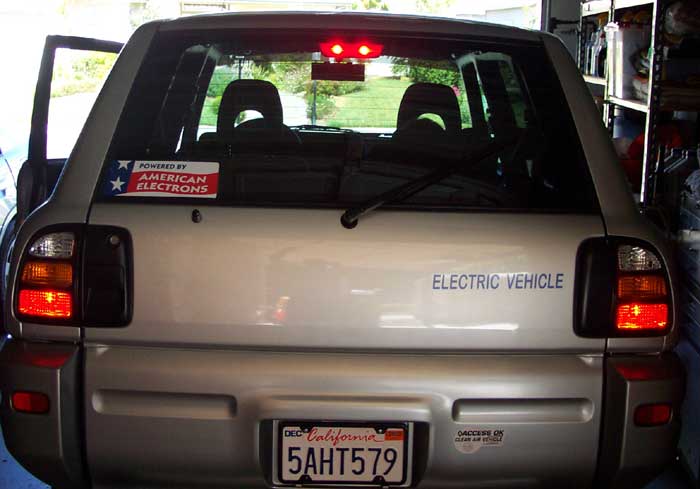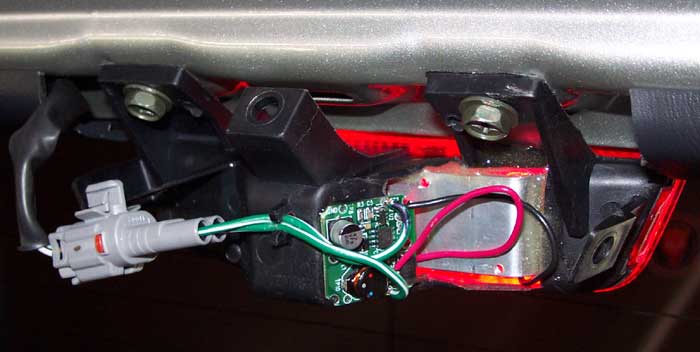A traditional incandescent light bulb requires about 1/3 of a second to achieve brightness (incandescent lights need to reach operating temperature in order to give off light). LEDs, on the other hand, produce light almost instantaneously. Surprisingly, at 65 mph, 1/3 of a second equates to more than thirty feet of travel. Adding LED brake lights can give following motorists some extra space to avoid parking in your trunk. But the main reason I wanted to do this, of course, is because it seemed really difficult and expensive. :-)
I used two 1W red LS/O Luxeon Star assemblies. They are thermally epoxied to a giant aluminum heat sink, and the driver circuit is epoxied onto the back of the existing brake housing. It wires in just like the stock unit. Much of the existing housing had to be removed to fit the new guts, while the mounting points had to remain. This is NOT a reversible procedure, an is quite invasive. The housing costs almost $100, the LEDs are $17/ea on a good day - so this wasn't something I dove right into with great enthusiasm. I am thrilled with the results though. The light is brighter, redder (is that a word?) and noticeably faster to illuminate. A side benefit is that it draws about 2W as compared to the incandescent bulb that draws 18W. The cool factor is, as always, priceless.
Here's me stopping in front of you in broad daylight. See how the lower lights
now look orange? Yes those are the actual, stock brake lights. Don't look
so bright anymore, do they? The incandescent (lower) lights have a white,
unfocused light shining through a red lens. The LEDs shine a red, focused
light through a red lens. Makes a difference!

With the beauty cover shroud removed, this is what the back of the robo-light
looks like, inside the car. This is 100% hidden when the shroud is installed.
You can see some of the aluminum heat sink here, and the driver circuit with
the stock connector.

